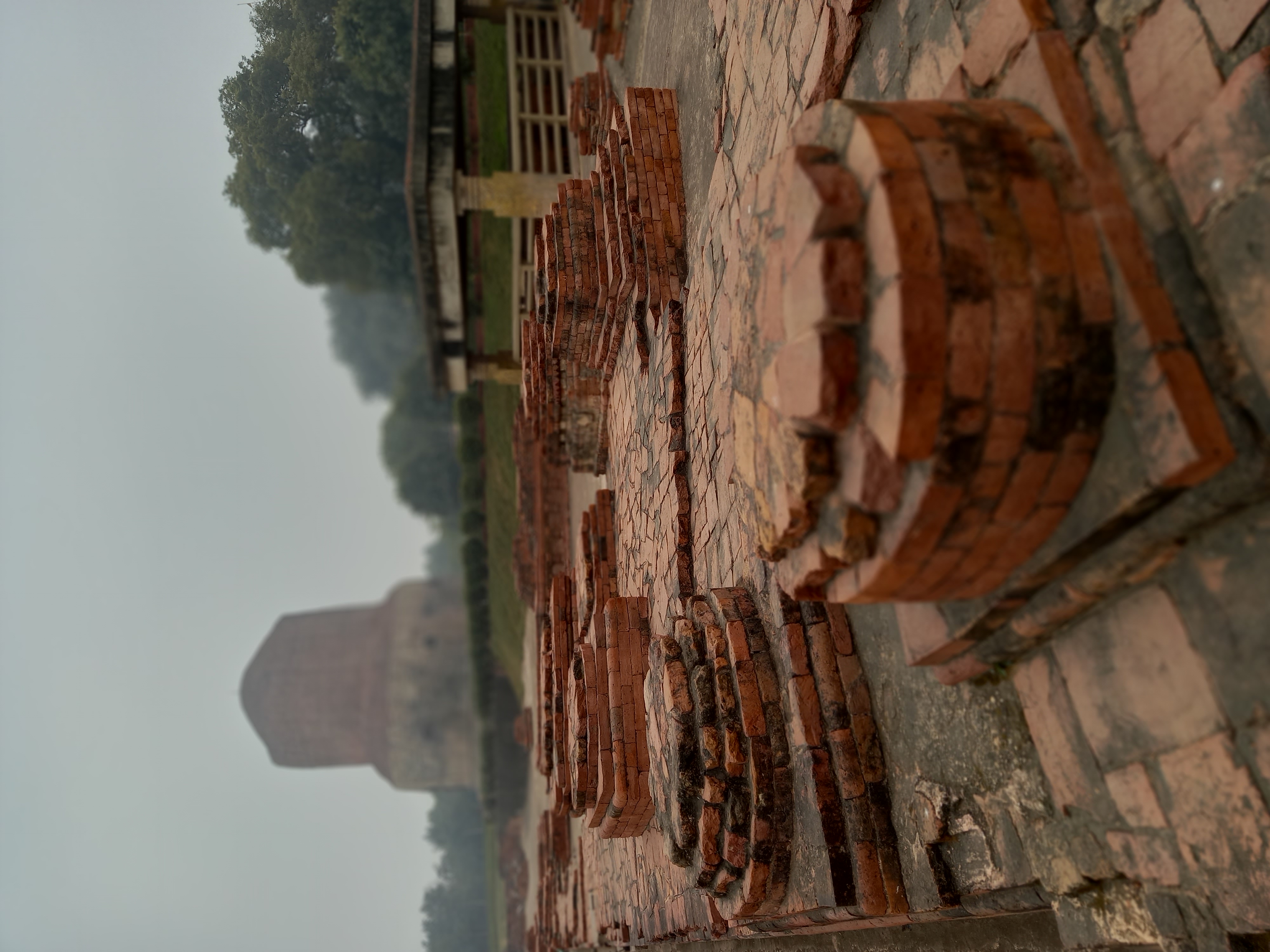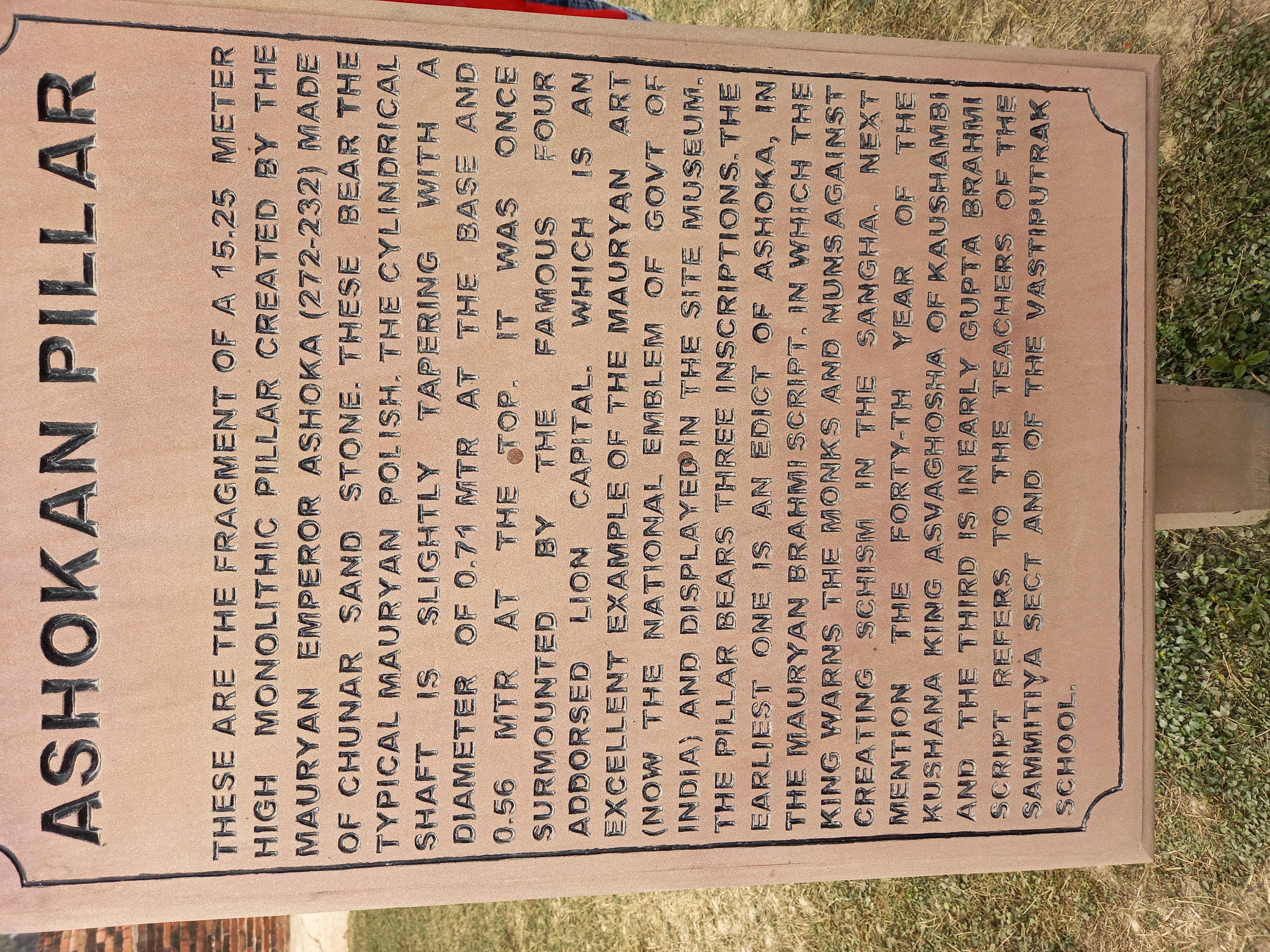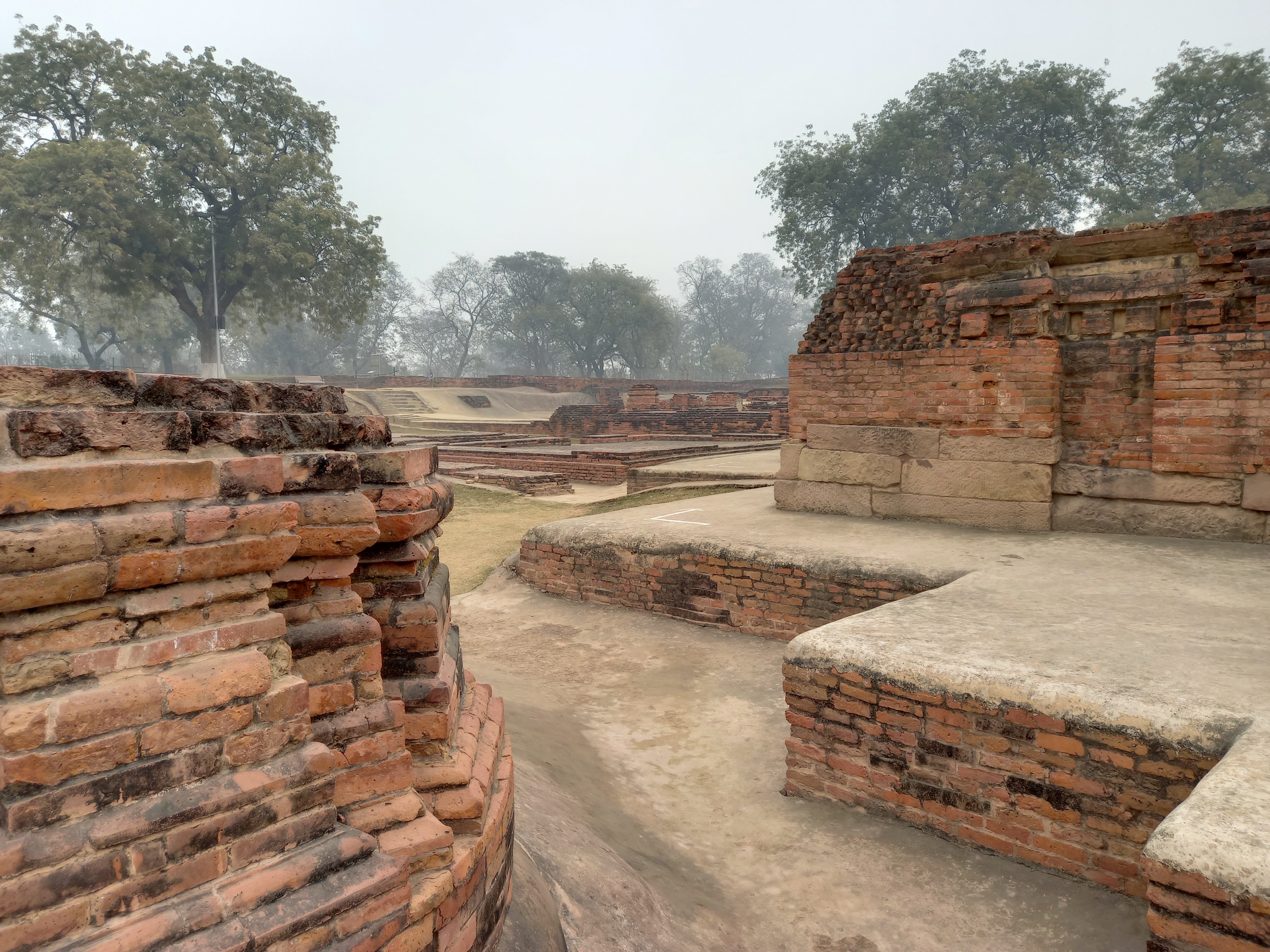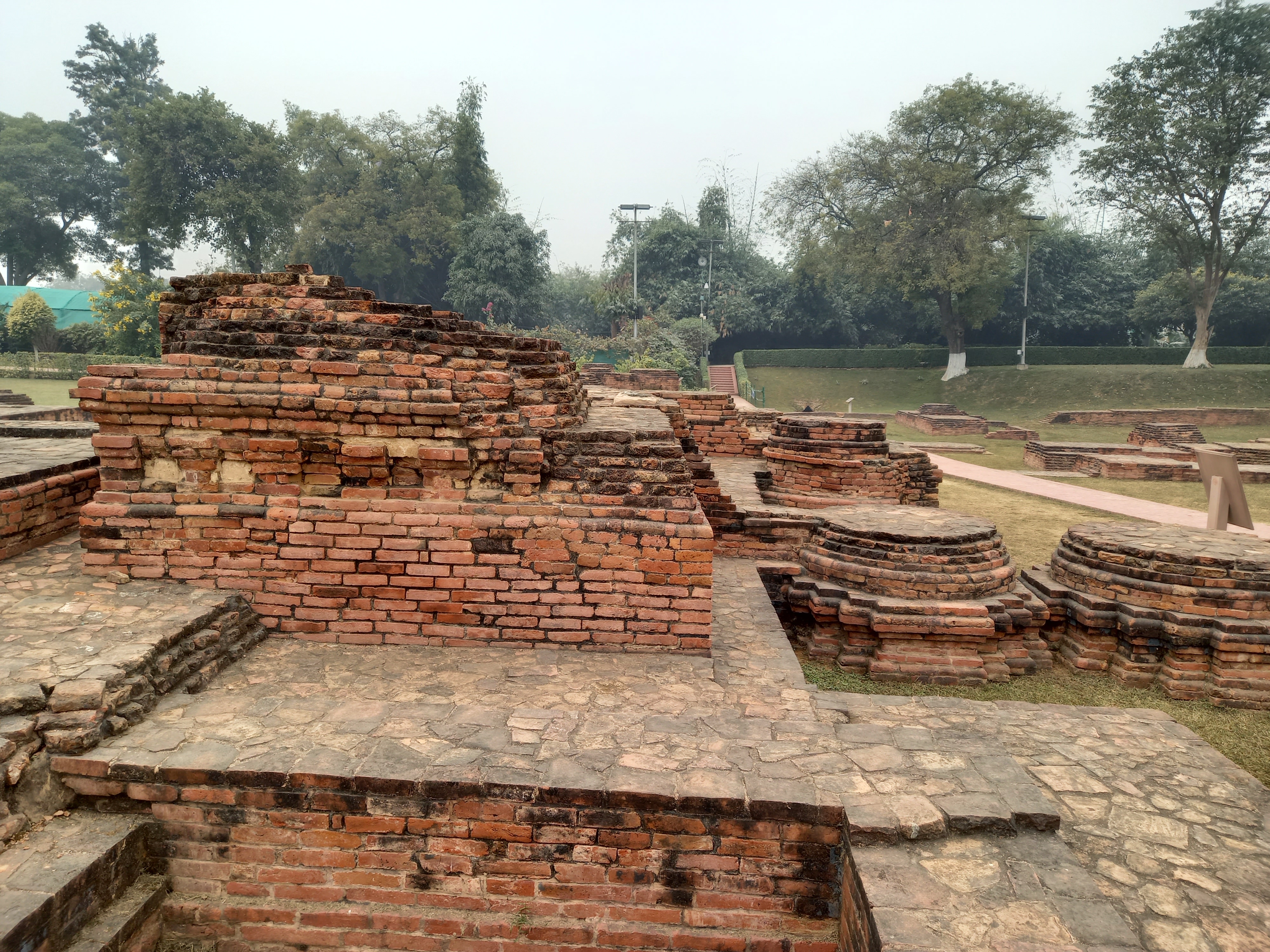


Excavation Site, Sarnath
After his enlightenment in Bodhgaya,
Buddha came to Sarnath, looking for his five former companions. He found them
in Sarnath, near the Chaukhandi Stupa.
History says that
Buddha gave His first sermon to the five disciples at the spot known as Dhamekh
in Sarnath. This famous event in the
life of Lord Buddha is called the ‘Dharma Chakra Pravartana’ or setting the
‘Wheel of Law’ in motion. Thus for Buddhists, this place marks as one of the
four most sacred places associated with Lord Buddha with the other three being
Lumbini, the site of birth; Bodhgaya, the site of enlightenment; and
Kushinagar, the site of nirvana of Lord Buddha.
The Buddha
started the discourse by advising the five ascetics to give up two extremes.
These were indulgence in sensual pleasures and the tormenting of the body. He
advised against too much sensual pleasure because these pleasures were base,
worldly, not noble and unhelpful in spiritual development. On the other hand,
tormenting the body was painful, not noble and also unhelpful in spiritual
development. He advised them to follow the Middle Path, which is helpful in
seeing things clearly, as they are, and in
attaining the knowledge, higher wisdom, peace, and enlightenment or nirvana.
This place
also marks the foundation of the first ‘Sangh’ that included Lord Buddha and
around 60 monks among others. The place became significant archeologically when
in 1798 Mr. J. Duncan reported about a stone box that contained a casket of
green marble, which was exposed while the Dharmarajika Stupa was being
dismantled by the workers of the Dewan of King of Benaras, Chet Singh. Over the
time, several other excavation works were carried out in and around this
structure. One such initial excavation work unearthed a stone tablet which
revealed that this Stupa was known as Dhamekh which historians generally
believed to be a distorted form of Dharma Chakra meaning turning the Wheel of
Dharma.
Buddhist
pilgrims from around the world including many national and international
dignitaries visit the Stupa to circumambulate it and offer prayer to Lord
Buddha.
The Buddha spent the next rainy season
in Sarnath at the Mulagandha-kuti vihara.
The Sangha having grown to 60 in number, the Buddha sent them out to teach the
Dharma to others
Sarnath was previously known as Mrigdava,
“deer park” and Isipatana, meaning the place where holy men fell to earth. The
latter name is based on the legend that when Buddha was born, devas came down
to announce it to 500 holy men. The holy men all rose into the air and
disappeared and their relics fell to the ground.
The Emperor Ashoka who took several measures to spread the Buddha’s
message of love and compassion throughout his vast empire, had embarked on a
tour to Sarnath around 234 B.C. It was around that time that he built the Dhamek
Stupa at Sarnath and several other monuments to commemorate his pilgrimage to
Sarnath.
Dhamekh Stupa holds an important place as it signifies the “seat of the
holy Buddha.” Buddhist pilgrims of different countries visit this place for
circumambulation or Parikrama of this
sacred Stupa and to offer worship to Lord Buddha.
Buddhism
flourished in Sarnath because of the support of kings and wealthy merchants
based in nearby Varanasi. By the 3rd century Sarnath had
become an important center for the arts, which reached its zenith during the
Gupta period (4th-6th century AD). When Hsuan Tsang visited from China in the
7th century, he found 30 monasteries and 3000 monks living at Sarnath.
Sarnath
became a major center of the Sammatiya school of Buddhism, one of the Nikaya of
Hinayana schools. The presence of images of Heruka and Tara indicate that
Vajrayana Buddhism was also practiced here.
At the end of
the 12th century, Sarnath was sacked by Turkish Muslims. The site was
subsequently plundered for building materials and has remained in ruins until
the present day. The site was entirely deserted until 1836, when the British
began excavations and restoration.
Sarnath has been developed as a place of pilgrimage, for Buddhists. A number of countries such as China, Thailand, Japan, Tibet, Sri Lanka, Korea, Vietnam and Myanmar, have established temples and monasteries in Sarnath in the style that is typical for the respective countries. There also exists a Vishwa Shanti Stupa near the Tibetan temple close by the Sarnath complex. Thus, pilgrims and visitors have the opportunity to experience an overview of Buddhist architecture from various cultures.
Buddha Purnima
is celebrated to mark the birth, enlightenment and salvation of Gautam Buddha.
Celebrations are held every year at most Buddhist sites and pilgrims from
around the world throng to Sarnath. Since it falls on a full moon night, the
festival is called Buddha Purnima in India. Day-long prayers along with free
medical camps for the poor are held during this day. In the evening, lamps are
lit at the Bodhi Tree, and other significant places. Devotees place the statue
of Buddha in a basin filled with water and flowers symbolizing the divinity of
his teachings. With vegetarian delicacies, hymns and offerings such as candles,
flowers and incense; the auspicious day of Buddha Purnima is celebrated with
much fervour.









